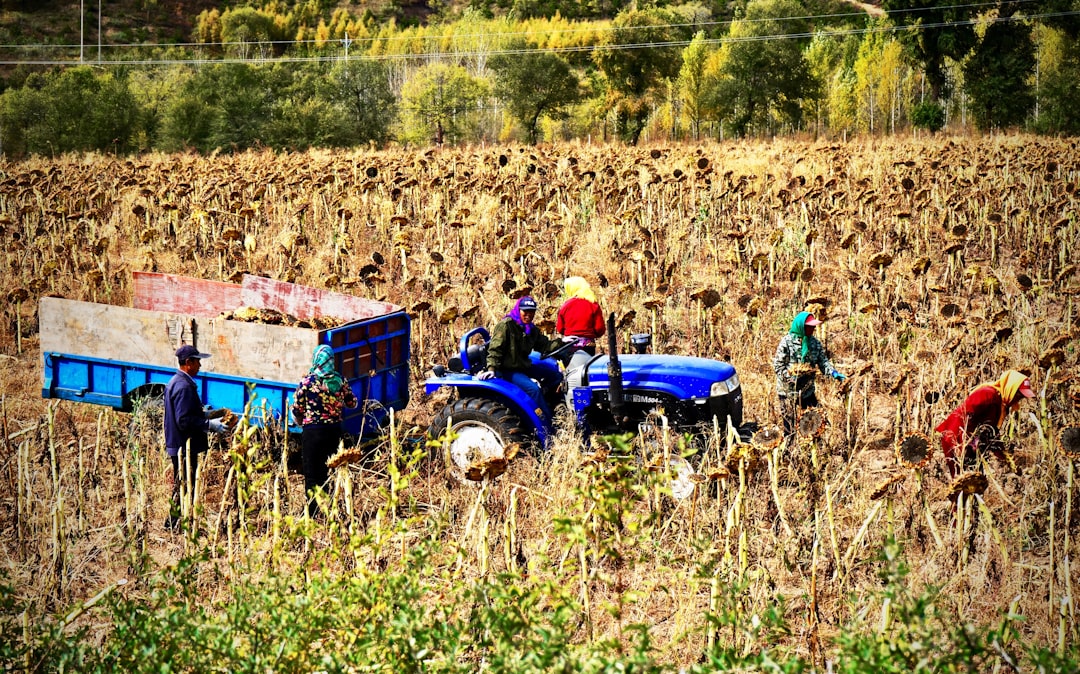What is it about?
Subsistence microenterprise farms in developing countries face a difficult environment characterized by a high degree of risk, credit constraints, a lack of financial markets, high input costs, and time-inconsistent preferences. Relaxing the credit constraint for microenterprises could lead to greater adoption of modern inputs and improved ability to turn inputs into outputs, both of which boost productivity. Productivity and efficiency underscore the organizational capacity of subsistence microenterprise farms to deal with external shocks, and have far-reaching implications in terms of ensuring their sustainable livelihood In this study, we examine how access to credit influences microenterprise farm productivity, and whether the effects on output come from changes in technology and/or from increased efficiency. We do so by using survey data from a field experiment that exploits the random assignment of credit services to agricultural microenterprises by the Bangladesh Rural Advancement Committee (BRAC) and employing a stochastic production frontier model. First, we examine the impact of credit access on the productivity of rice-producing farms. Then, we disentangle the overall productivity effect into technological change and changes in efficiency. In addition to identifying the impacts of credit access on productivity, technological change, and technical efficiency, we examine how the change in efficiency varies in relation to several demographic and farm characteristics. We find that relaxing the credit constraint has a significant positive impact on rice production, both in relation to frontier shift and technical efficiency. We find a positive impact from access to credit on total rice output, specifically high-yielding variety (HYV) rice and hybrid rice, but no impact on traditional rice varieties. We find that, relative to the baseline, credit access increases overall productivity by, on average, approximately 14 percent, with the greatest impact on modern hybrid rice growing farms. After decomposing the overall output effect into frontier shift and efficiency change effects, we find that around 11 percent of the overall productivity gain comes from technological change, or frontier shift. In terms of technical efficiency, small-scale farms with access to subsidized credit are, on average, 3 percent more efficient than farms without credit access (which, relative to the average baseline rice yield of 18 kilograms per decimal, implies approximately half a kilogram less lost output as a result of inefficiency). This positive effect is even more pronounced among producers of hybrid rice varieties, who exhibit an efficiency gain of, on average, 9 percent. Moreover, we find different impacts among marginal and tenant farm households. Our results show that among the farms with credit access, enterprises with less than 50 decimals under cultivation are, on average, 3 percent less efficient than larger farms. We also find strong evidence of a positive effect of credit access (at the 95th percentile level) on efficiency for tenant farm households compared with pure owner farms.
Featured Image

Photo by Nandhu Kumar on Unsplash
Why is it important?
Improving productivity among microenterprises is important, especially in low-income countries where market imperfections are pervasive, and resources are scarce. Relaxing credit constraints can increase the productivity of microenterprises. Using a field experiment involving agricultural microenterprises in Bangladesh, we estimated the impact of access to credit on the overall productivity of rice farmers and disentangled the total effect into technological change (frontier shift) and technical efficiency changes.
Perspectives
A simple story helps to explain the positive impacts that we observed. When microenterprises have limited recourse to well-functioning credit markets, they are unlikely to adopt modern high-yielding crop varieties that require more cash upfront to buy seed and complementary inputs that must be obtained and used in a timely manner. Provision of credit provides a liquidity buffer that enables these microenterprises to adopt modern crop varieties and apply and manage complementary inputs in a more effective and timely manner, which ultimately leads to higher productivity and efficiency compared with households that do not have access to credit. The findings of this study have important implications for policy, especially in relation to resource-constrained contexts. This study adds to our knowledge of the potential benefits of credit programs targeting subsistence farm enterprises, and the findings can help inform decisions aimed at achieving better targeting by such programs.
Dr. Plamen Nikolov
Harvard Institute for Quantitative Social Science
Read the Original
This page is a summary of: The effects of access to credit on productivity: separating technological changes from changes in technical efficiency, Journal of Productivity Analysis, October 2019, Springer Science + Business Media,
DOI: 10.1007/s11123-019-00555-8.
You can read the full text:
Contributors
The following have contributed to this page










